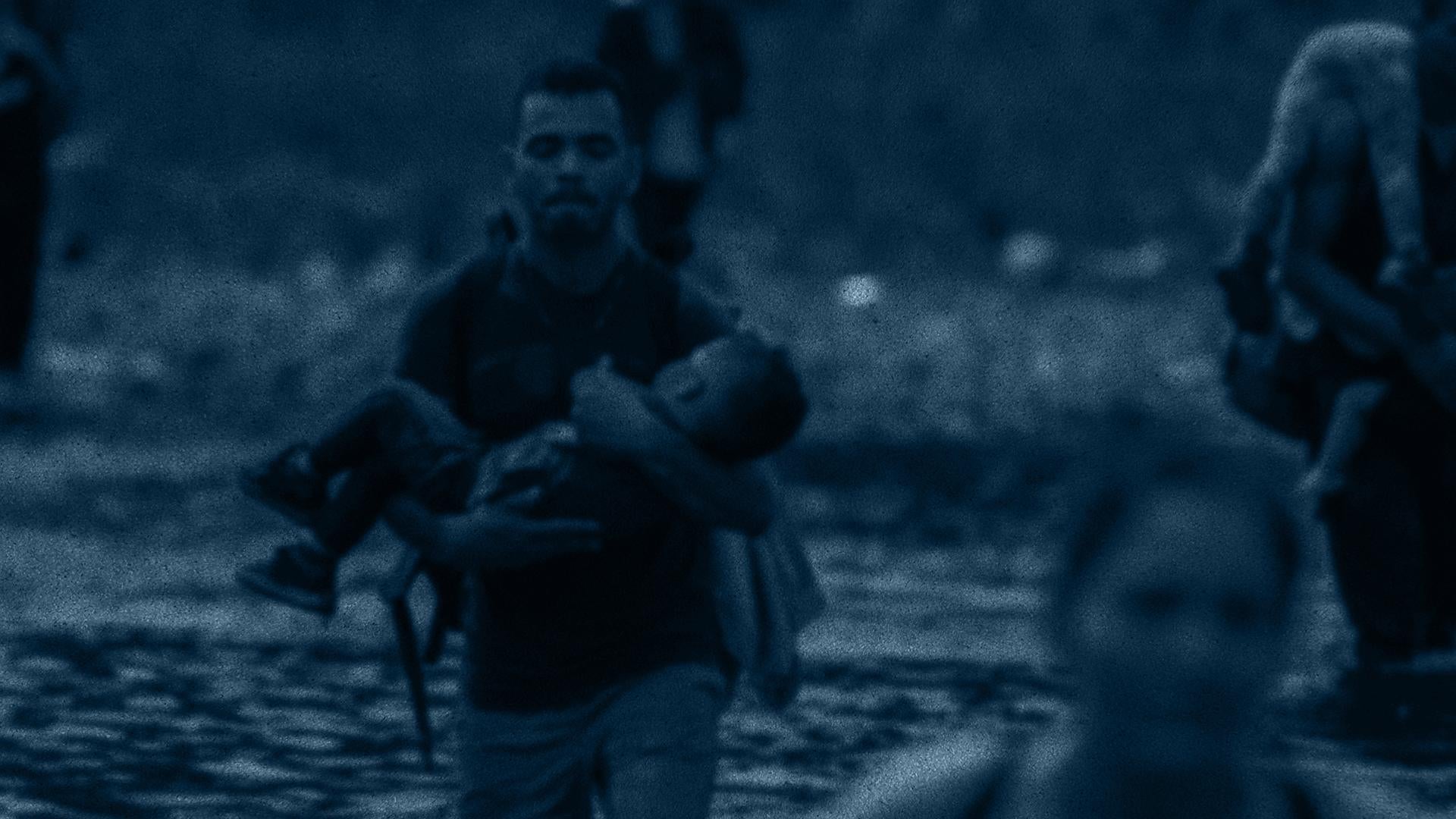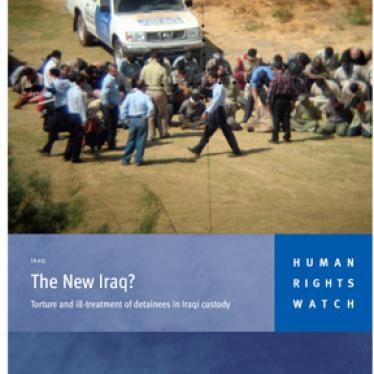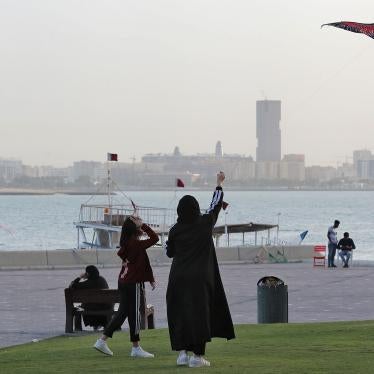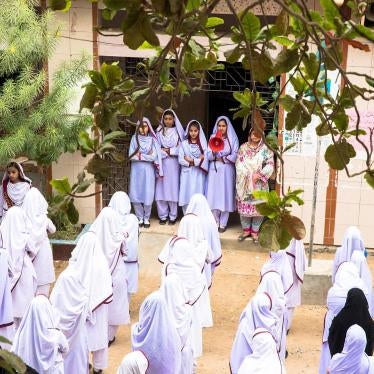Joint submission on promoting and protecting the human rights of women and girls in conflict and post-conflict situations on the occasion of the twentieth anniversary of Security Council resolution 1325 by Humanity & Inclusion, Human Rights Watch, International Disability Alliance, Women Enabled International and the Women’s Refugee Commission
2 April 2021
“Being a woman and having a disability makes it doubly more difficult. For example, a man can ask for help from a male friend to flee. But in a society like Syria, a woman cannot. If you don’t have an immediate male relative, you cannot just call on a friend to carry you.” – Nujeen Mustafa, Disability Rights Activist, at UN Security Council briefing on the humanitarian situation in Syria, April 24, 2019[1]
Introduction/Summary
This submission sets out information and recommendations on promoting and protecting the human rights of women and girls with disabilities in conflict and post-conflict situations. Women and girls with disabilities are disproportionately impacted by armed conflicts[2], yet remain underreported and excluded from peace and security processes. Women and girls with disabilities account for nearly one-fifth of all women and girls worldwide[3] and face multiple and intersecting forms of discrimination based on their gender, as well as their disability. Sustainable peace, recovery and inclusive humanitarian action requires the full, equal and meaningful participation of diverse women, including women and girls with disabilities. The Office of the High Commissioner on Human Rights, in its report, should request member states, the Human Rights Council and its mechanisms, as well as other stakeholders to ensure that monitoring and reporting on the experiences of women and girls in conflicts includes the specific experiences of women and girls with disabilities, and ensure their meaningful participation in conflict prevention, response, peacekeeping and peacebuilding.
Legal frameworks and policies
The following legal frameworks and policies are particularly relevant to ensure the rights of women and girls with disabilities in conflict and post-conflict settings: the Convention on the Elimination of All Forms of Discrimination against Women (CEDAW); CEDAW General Recommendation No. 18,[4] which asks states parties to CEDAW to provide information on women with disabilities in their periodic reports; CEDAW recommendation No. 30 on women in conflict prevention, conflict and post-conflict situations; the Convention on the Rights of Persons with Disabilities (CRPD), in particular Article 6 on women with disabilities and Article 11 on situations of risk and humanitarian emergencies; General Comment No. 9 on the Convention on the Rights of the Child (CRC), Articles 78-80, on the “high priority for special assistance” that states should provide children with disabilities in armed conflicts and noting particular risks to refugee and internally displaced girls; the IASC Guidelines on Inclusion of Persons with Disabilities in Humanitarian Action[5]; the IASC Gender Handbook[6] for humanitarian action; Security Council Resolution 1325 (2000) and its subsequent resolutions on women, peace, and security; and Security Council Resolution 2475 (2019) on the participation and protection of persons with disabilities in conflict.
Implementation of Resolution 1325
Twenty years after the adoption of Security Council Resolution 1325, implementation of the women, peace, and security agenda has been slow. Between 1992 and 2019, women only constituted, on average, 13 percent of negotiators, 6 percent of mediators, and 6 percent of signatories in major peace processes worldwide.[7] There is currently no known tracking of representation of women with disabilities in peace negotiations, either in formal or informal roles. Justice and post-conflict reconciliation activities generally do not include women with disabilities, nor are such programs made accessible to them or designed in a gender and disability sensitive manner to include their concerns.[8]
The UN Secretary-General’s 2020 report on women, peace and security notes that women with disabilities are less likely to be prioritized by or have access to humanitarian response efforts and are less likely to be included in peacebuilding, despite accounting for nearly one fifth of all women worldwide.[9]
Only two[10] of the ten resolutions on women, peace and security mention the needs of persons with disabilities explicitly, while none include an explicit reference to women with disabilities. In 2019, the Security Council adopted resolution 2475, recognizing the disproportionate impact of armed conflict and humanitarian crises on persons with disabilities and urging member states to enable the meaningful participation of persons with disabilities, in conflict prevention, reconciliation, reconstruction and peacebuilding. However, resolution 2475 also makes no specific mention of the participation of women with disabilities and the additional gendered barriers to participation they face, but only references women with disabilities in the context of their specific needs in accessing assistance. While important, references to women with disabilities only in the needs context neglects their right to meaningful participation. Women with disabilities face specific gender and disability discrimination, including sexist and ableist attitudes. Women with disabilities, who face higher risks during hostilities[11] and in displacement, have unique experiences, perspectives, and expertise they bring to conflict prevention, response, and the peace table. A study by Inclusive Friends on the situation of women with disabilities in Nigeria notes, “Women with disabilities spoke of not usually being invited to community peace forums. When they did take part, they were not given a role and so were unable to contribute their perspectives, skills and talents.”[12]
Therefore, the women, peace and security resolutions should be implemented in synergy with resolution 2475, which urges member states to enable the meaningful participation and representation of persons with disabilities, including their representative organizations, in humanitarian action and peace processes and eliminate discrimination and marginalization. The women, peace and security resolutions, in turn, provide obligations and guidance on the gendered nature of conflict and the meaningful participation of women and girls, access to justice for gender-based international crimes, and the provision of gender-sensitive services, including sexual and reproductive health services.
Women with disabilities are also frequently left out of National Action Plans (NAPs) on women, peace and security. For example, recent NAPs by Albania (2018-2020),[13] Afghanistan (2015-2022),[14] Nigeria (2017-2020),[15] Switzerland (2018-2021),[16] and Yemen (2020-2022)[17] make no specific mention of women with disabilities. In contrast, the NAP of South Sudan (2015-2020), which consulted women with disabilities and their representative organizations in the drafting process, includes over 30 references to women and girls with disabilities and commits that activities undertaken need to take into consideration the “unique conditions and the priority interests and the needs of women and girls with disabilities.”[18] This shows the importance of involving women-led organizations of persons with disabilities early on and throughout the drafting process of NAPs.
Role of women’s groups and female human rights defenders, women humanitarian workers and women peacebuilders
Studies show that inclusive peace processes are more durable, and that the participation of civil society, including women’s organizations, makes a peace agreement considerably less likely to fail.[19] The role of women’s groups, in particular the expertise of women-led organizations of persons with disabilities, remains largely untapped in humanitarian crises, from the onset of an emergency through to recovery and development, as they consistently face a lack of funding and less organizational capacity.[20] Exclusion of women-led organizations of persons with disabilities from both the male-dominated disability movement and the women’s rights movement further hinders their capacity development and leadership opportunities in the humanitarian sector, as well as on peace and security issues.
Measures of accountability implemented or planned to protect and provide remedies to women and girl victims and survivors of human rights violations, including gender-based violence
Women and girls have less access to reporting and justice mechanisms due to inaccessibility and to gender and disability stereotypes. Even when they report, they are routinely not believed or not viewed as credible witnesses.[21] Under the CRPD and CEDAW, states are obligated to take steps to dismantle barriers that women with disabilities face in accessing justice systems, including physically inaccessible police and court facilities and information and communication barriers.[22] States must also take steps to minimize disruptions to the justice system during humanitarian emergencies, for instance by deploying mobile or specialized teams to minimize impunity for gender-based violence.[23]
Remedies and lifesaving services available to victims of conflict-related violence
Women and girls with disabilities are disproportionately affected by conflict-related sexual violence and face multiple barriers in accessing lifesaving services, including medical care, accessible information, and safe spaces. In conflict, loss of community support and protection mechanisms puts women and girls with disabilities at an increased risk of gender-based violence, particularly those with intellectual and psychosocial disabilities.[24] Further, responses and policies on preventing and addressing gender-based violence often fail to include women and girls with disabilities, who already face limitations on their personal mobility[25] and risk of abandonment. A review of 27 policies on gender-based violence across the African continent found that women with disabilities are invisible in two-thirds of them.[26]
Women and girls with disabilities face particular barriers in accessing contraception and menstrual health, despite their right to access all mainstream health services and information.[27] Negative and hostile attitudes among service providers, inaccessible buildings and equipment, lack of information in accessible formats, or lack of transportation make it difficult for women and girls with disabilities to access health care,[28] especially in conflict situations. Assumptions by staff that women and girls with disabilities need only disability-related services, can lead to the denial of sexual and reproductive health care or other gender sensitive services, putting women and girls with disabilities at higher risk of unwanted pregnancy or sexually transmitted infections.[29]
In humanitarian settings, the lack of access to education disproportionately affects girls and young women with disabilities, especially those who are refugees, internally displaced, migrants or asylum seekers.[30] This exclusion deprives girls with disabilities of access to informal information networks on safety, gender-based violence, and relationships,[31] making them less likely to tell others about or seek assistance for instances of violence and abuse.
Women’s traditional gender roles as caregivers can add additional burdens on women with disabilities, especially in displacement. A single mother of five children whose leg was amputated after she was struck by a bullet during a government attack on the Bor camp in South Sudan in 2014, said that the poor living conditions in the camp greatly affect her morale: “Now, I am thinking too much. Not about my disability but about how I can support my children. It is too much and I sometimes think that it is better for me to die because no one is supporting us.”[32]
The Covid-19 pandemic has also increased risks for women with disabilities due to interruption of services, lockdowns and other government-imposed limitations on movement that keep women and girls with disabilities isolated in their homes, and because governments and media fall short in providing information in accessible formats on coronavirus and protection measures.[33] The risk of violence, exploitation and abuse, including gender-based violence, is also heightened for women and girls with disabilities during the pandemic. States should ensure that women and girls with disabilities in humanitarian settings continue to have access to violence prevention services and complaint mechanisms, and sexual and reproductive health services. This includes ensuring that remote or other alternate service delivery mechanisms are accessible.[34]
Recommendations:
To the Human Rights Council and other UN bodies/mechanisms
- The Human Rights Council and its mechanisms should consistently and meaningfully consult women and girls with disabilities and their representative organizations, including when relevant mechanisms conduct country visits, and ensure their inclusion in conflict prevention and peacekeeping efforts.
- Resolutions and reports related to conflict and post-conflict situations, including country resolutions, should include an age, gender and disability analysis. When reporting, data should be disaggregated by age, gender and disability at a minimum, to help better understand different protection needs of women and girls with disabilities.
- The Human Rights Council and special procedure mandate-holders should advocate for an inclusive implementation of the women, peace and security agenda that includes participation and needs of women and girls with disabilities.
- Investigative bodies should prioritize, monitor and fully investigate human rights abuses targeting women and girls with disabilities, including gender-based violence and ensure that procedures are accessible to women and girls with diverse disabilities, including those with physical, intellectual, psychosocial and sensory disabilities.
To Member States
- Include explicit references and allocate resources to women with disabilities and their representative organizations in their National Action Plans on women, peace and security and ensure their inclusion in the drafting process.
- Ensure the meaningful participation of women with disabilities in peacemaking, peacekeeping and peacebuilding efforts and ensure accessibility in each and every peace and political process, including by providing accessible information, transport and adequate resources.
- Use the Universal Periodic Review (UPR) to make specific inquiries on the situation and the meaningful participation of women with disabilities in conflict and post-conflict settings.
[1] Statement by Ms. Nujeen Mustafa, United Nations Security Council briefing on the humanitarian situation in Syria on April 24, 2019, https://www.hrw.org/news/2019/04/25/you-can-and-should-do-more-ensure-people-disabilities-are-included-all-aspects-your.
[2] Stephanie Ortoleva, Women with Disabilities: The Forgotten Peace Builders in Loy. L.A. Int’l & Comp. L. Rev. 83 (2010), p. 92, available at: https://womenenabled.org/pdfs/StephanieOrtoleva,WomenwithDisabilities-TheForgottenPeaceBuilders,33LOYLAINT'L&COMPLREV83(2010)Final.pdf.
[3] Report by the UN Secretary-General on Women, Peace, and Security, UN Doc. S/2020/946 (September 25, 2020), ¶ 39.
[4] General recommendation by the CEDAW Committee No. 18 on Disabled Women, tenth session (1991).
[5] IASC Guidelines on Inclusion of Persons with Disabilities in Humanitarian Action (2019).
[6] IASC Gender Handbook for Humanitarian Action (2017).
[7] Center for Foreign Relations, Women’s Participation in Peace Processes, last retrieved on March 22, 2021 https://www.cfr.org/womens-participation-in-peace-processes/.
[8] Stephanie Ortoleva, Women with Disabilities: The Forgotten Peace Builders in Loy. L.A. Int’l & Comp. L. Rev. 83 (2010), p. 85.
[9] Report by the UN Secretary-General on Women, Peace, and Security, UN Doc. S/2020/946 (September 25, 2020), ¶ 39.
[10] See UN Doc. S/RES/2106 (2013) “19. Recognizing the importance of providing timely assistance to survivors of sexual violence, urges United Nations entities and donors to provide non-discriminatory and comprehensive health services, including sexual and reproductive health, psychosocial, legal, and livelihood support and other multi-sectoral services for survivors of sexual violence, taking into account the specific needs of persons with disabilities”; UN Doc. S/RES/1960 (2010) “Reaffirming the importance for States, with the support of the international community, to increase access to health care, psychosocial support, legal assistance, and socio-economic reintegration services for victims of sexual violence, in particular in rural areas, and taking into account the specific needs of persons with disabilities” (emphasis added).
[11] For example, Human Rights Watch documented sexual violence against women with disabilities in the Central African Republic as well as Cameroon. Human Rights Watch, Cameroon: People With Disabilities Caught in Crisis (New York: Human Rights Watch, 2019), https://www.hrw.org/news/2019/08/05/cameroon-people-disabilities-caught-crisis; Central African Republic: Deadly Raid on Displaced People (New York: Human Rights Watch, 2016), https://www.hrw.org/news/2016/11/01/central-african-republic-deadly-raid-displaced-people.
[12] Inclusive Friends with support from the Nigeria Stability and Reconciliation Programme (NSRP), What Violence Means to Us: Women with Disabilities Speak, (2015), p. 17.
[13] Albania, Action Plan for the Implementation of the United Nations Security Council Resolution 1325, On Women, Peace and Security, (2018-2020), available at: https://www.wpsnaps.org/app/uploads/2019/09/Albania-NAP-2018-2020.pdf.
[14] Afghanistan’s National Action Plan on UNSCR 1325 – Women, Peace and Security (2015-2022), available at http://peacewomen.org/sites/default/files/NAP%20Afghanistan.pdf.
[15] NGO Submission to the Human Rights Committee by Advocacy for Women with Disability Initiative (AWWDI); Legal Defence and Assistance Project (LEDAP); Women Enabled International (WEI) (April 2018), p.10 available at https://womenenabled.org/pdfs/WEI%20AWWDI%20LEDAP%20letter%20to%20HRC%20Nigeria%20List%20of%20Issues%20Submission%20FINAL.docx.
[16] Switzerland’s Fourth National Action Plan to Implement UN Security Council Resolution 1325 (2018 – 2022), available at: https://www.peacewomen.org/sites/default/files/Swiss%204th%20NAP.pdf.
[17] National Republic of Yemen, National plan to implement Security Council Resolution 1325, Women, security and peace (2020 –2022), available at: https://www.peacewomen.org/action-plan/national-action-plan-yemen.
[18] National Action Plan on women, peace and security, South Sudan (2015-2020), available at: https://www.peacewomen.org/action-plan/national-action-plan-s-sudan.
[19] Nilsson, Anchoring the Peace: Civil Society Actors in Peace Accords and Durable Peace, 2012, available at: https://www.tandfonline.com/doi/abs/10.1080/03050629.2012.659139?scroll=top&needAccess=true&journalCode=gini20.
[20] Women’s Refugee Commission, “Working to Improve Our Own Futures”: Inclusion of Women and Girls with Disabilities in Humanitarian Action (May 2016), available at https://www.womensrefugeecommission.org/wp-content/uploads/2020/04/Strengthening-Networks-of-Women-with-Disabilities.pdf.
[21] Anrows, Women, disability and violence: Barriers to accessing justice (April 2018), available at: https://apo.org.au/sites/default/files/resource-files/2018-04/apo-nid173826.pdf.
[22] Women Enabled, Rights of Women and Girls with Disabilities in Conflict and Humanitarian Emergencies, (Oct 2020) available at: https://womenenabled.org/blog/rights-of-women-and-girls-with-disabilities-in-conflict-and-humanitarian-emergencies/.
[23] Women Enabled, Rights of Women and Girls with Disabilities in Conflict and Humanitarian Emergencies (Oct 2020).
[24] Women’s Refugee Commission “I see that it’s possible” Building Capacity for Disability Inclusion in Gender-Based Violence Programming in Humanitarian Settings (May 2015), available at: http://www.womensrefugeecommission.org/wp-content/uploads/2020/04/Disability-Inclusion-in-GBV-English.pdf.
[25] Achayo Rose Obol and Stephanie Johanssen, Women with Disabilities must not be Excluded (December 2020), available at: https://reliefweb.int/report/world/women-and-girls-disabilities-must-not-be-excluded.
[26] Humanity and Inclusion, A long way to go: Inclusion of women with disabilities in African GBV policies - Making It Work Policy Review (December 2020), available at: https://www.makingitwork-crpd.org/news/long-way-go-inclusion-women-disabilities-african-gbv-policies-making-it-work-policy-review.
[27] IASC Guidelines on the Inclusion of Persons with Disabilities in Humanitarian Action, p. 111.
[28] Report by the UN Special Rapporteur on the Rights of Persons with Disabilities, UN Doc A/72/133 (July 14, 2017), Sexual and reproductive health and rights of girls and young women with disabilities, ¶ 25.
[29] IASC Guidelines, Inclusion of Persons with Disabilities in Humanitarian Action (2019), p. 111.
[30] Report by the UN Special Rapporteur on the Rights of Persons with Disabilities, UN Doc A/72/133 (July 14, 2017), Sexual and reproductive health and rights of girls and young women with disabilities, ¶ 24.
[31] Emma Pearce, Kathryn Paik, Omar J. Robles, Adolescent Girls with Disabilities in Humanitarian Settings (March 2016), available at: https://www.berghahnjournals.com/view/journals/girlhood-studies/9/1/ghs090109.xml?ArticleBodyColorStyles=full-text.
[32] Human Rights Watch, South Sudan: People with Disabilities, Older People Face Danger, (May 2017) available at: https://www.hrw.org/news/2017/05/31/south-sudan-people-disabilities-older-people-face-danger.
[33] International Disability Alliance, The missing millions from the gender lens discussion of COVID-19 (May 2020) available at https://www.internationaldisabilityalliance.org/blog/gender-COVID19-follow-up.
[34] IASC Key Messages on Applying IASC Guidelines on Disability in the COVID-19 Response, July 2020, available at: https://interagencystandingcommittee.org/iasc-task-team-inclusion-persons-disabilities-humanitarian-action/iasc-key-messages-applying-iasc-guidelines-disability-covid-19-response.








